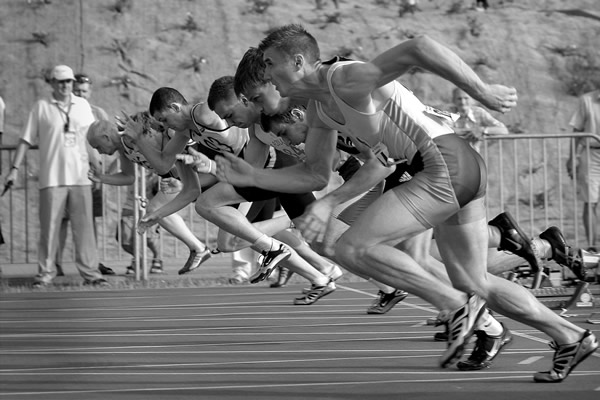What Is Running Gait Analysis, and How Can It Improve Your Performance?
Running gait analysis is an invaluable tool for athletes and recreational runners alike. It involves studying how your body moves when you run and how it can be improved for optimal performance.
By assessing the interaction between your body and the ground, running gait analysis can help identify weaknesses and strengths in your running form, pinpointing where you can make changes to improve your speed, endurance and overall performance. With detailed analysis, running gait analysis can help you build a stronger, more efficient running form and increase your running efficiency.
It can also provide an insight into any biomechanical issues that may be contributing to running-related injuries. With the right analysis and adjustments, you can take your running performance to the next level.
What is running gait analysis?
Running gait analysis is an evaluation of your running form to identify any issues that could be holding you back. It involves a trained expert analysing your running form and providing you with a report that identifies strengths and weaknesses in your running technique.
Running gait analysis is a great way to identify any underlying biomechanical issues that may be contributing to running-related injuries. It can also help you identify areas that could be improved to increase your running efficiency and reduce your risk of injury.
Running gait analysis consists of three main components: video analysis, laboratory analysis and 3D scanning. Video analysis involves recording your running form using a special video camera, while laboratory analysis involves measuring the forces your body experiences while running on a treadmill.
3D scanning is an advanced technique that involves taking a series of photographs to produce a 3D image of you running.
How does running gait analysis work?
Video analysis – Video analysis is the first step in running gait analysis. It involves recording your running form while you are going through a series of running drills.
This allows the expert observing your form to make notes on your running technique and analyse any biomechanical issues you may have. Laboratory analysis – Laboratory analysis is commonly used in running gait analysis to identify any weaknesses in your running form and help you correct them.
During this part of the analysis, you’ll be asked to run on a treadmill while your form is analysed by sensors. The sensors measure the forces your body experiences during running, which can help identify biomechanical issues in your form.
3D scanning – 3D scanning is an advanced form of running gait analysis that allows the expert to analyse your running form in great detail. With 3D scanning, an expert will photograph you while you run on a treadmill and use special software to convert the images into a 3D image. This allows them to analyse your running form in great detail and identify any biomechanical issues.

Benefits of running gait analysis
Running gait analysis is a great way to identify any underlying issues that could be preventing you from reaching your running goals, including any biomechanical problems that may be contributing to running-related injuries.
It can also help you identify areas that could be improved to increase your running efficiency, helping you run faster, longer and smoother. With running gait analysis, you can benefit from: – A detailed analysis of your running form – Running gait analysis provides a detailed analysis of your running form, allowing you to identify and correct any issues holding you back.
It allows an expert to break down your running form in great detail, pinpointing any areas that could be improved. – An insight into any biomechanical issues that may be causing running-related injuries – Running gait analysis allows you to identify any weaknesses in your running form that could be causing running-related injuries.
It allows an expert to analyse your running form in great detail and determine any areas that may be causing injury. – A detailed plan for correcting any biomechanical issues – When conducting a running gait analysis, an expert will identify any weaknesses in your running form, as well as any areas where you are strong.
They will then use this information to create a plan for correcting your biomechanical issues, helping you improve your running form and reduce your risk of injury. – Increased running efficiency – Running gait analysis allows you to identify any areas of your running form that could be improved, helping you run faster, longer and smoother.
It allows an expert to identify any areas of your running form that could be improved, helping you run faster, longer and smoother.
Factors to consider when doing a running gait analysis
Age – As you age, your body will naturally begin to experience changes, including in your running form. With age, there may be certain biomechanical issues that become more prominent in your running form, such as muscle loss, joint stiffness and reduced flexibility.
Because of this, the running gait analysis of an older runner may differ from that of a younger athlete. – Injury history – If you’ve been experiencing running-related injuries, running gait analysis can be a useful tool for identifying any biomechanical issues contributing to the injuries.
It can help you identify weaknesses in your running form that may be causing the injuries and allow you to correct them, reducing your risk of future injuries. – Injury history – If you’ve been experiencing running-related injuries, running gait analysis can be a useful tool for identifying any biomechanical issues contributing to the injuries.
It can help you identify weaknesses in your running form that may be causing the injuries and allow you to correct them, reducing your risk of future injuries.
How to interpret the results of a running gait analysis
When you receive your running gait analysis report, you’ll likely find charts and graphs detailing your running form, along with written notes from the expert conducting the analysis.
This information can help you identify and correct any weak points in your running form, allowing you to make changes to your form that may improve your performance.
When interpreting your running gait analysis report, you can use the following information to help you identify areas that could be improved: – Gait Cycle Time – The gait cycle time is the amount of time that it takes you to complete one stride, from lifting your foot off the ground until you place it back down again.
A shorter gait cycle time generally indicates a more efficient running form, while a longer gait cycle time suggests that your body is working harder to complete a single stride. – EMG Analysis – The EMG analysis identifies the level of muscle activation in various muscles throughout the gait cycle.
If a muscle is highly activated during the gait cycle, it’s working harder than normal, which means it may be holding you back. – Graphed Load and Forces – The graphs detailing the forces your body experiences and the amount of load your body is bearing can help you identify any biomechanical issues that may be holding you back.
If certain graphs show a high level of force or load, it suggests that a certain part of your body is working particularly hard and may be contributing to pain or injury.

